Antony finds out the unique challenges that taking a trike around an event like the Dirty Reiver poses.

Words Antony de Heveningham Photography As Credited
We’re in a van heading up to Kielder Forest, and my mate Rik is a tad stressed. He’s the manager for Experience Community, a Yorkshire charity that specialises in providing outdoor adventures for disabled people, and whose mission this weekend is to get a group of riders around the Dirty Reiver gravel event.
Rik is stressed for a number of reasons. There’s the fact that in the van are three highly specialised adapted e-bikes which can only be pedalled with the rider’s hands – everything from cranks to seats is specific to that model of bike. If we’ve forgotten a vital part, it’s very unlikely that we’ll be able to borrow one. Then there’s the 8.15am start time cut-off for the ride – doable enough, but getting into a handcycle (or to a toilet) also means everyone needs a transfer wheelchair on standby. Experience Community has a fleet of bikes which it loans out for trips like this, so most of the riders won’t be on their own machine. In short, people won’t just be jumping on and pedalling off.
Latest Singletrack Merch
Buying and wearing our sustainable merch is another great way to support Singletrack
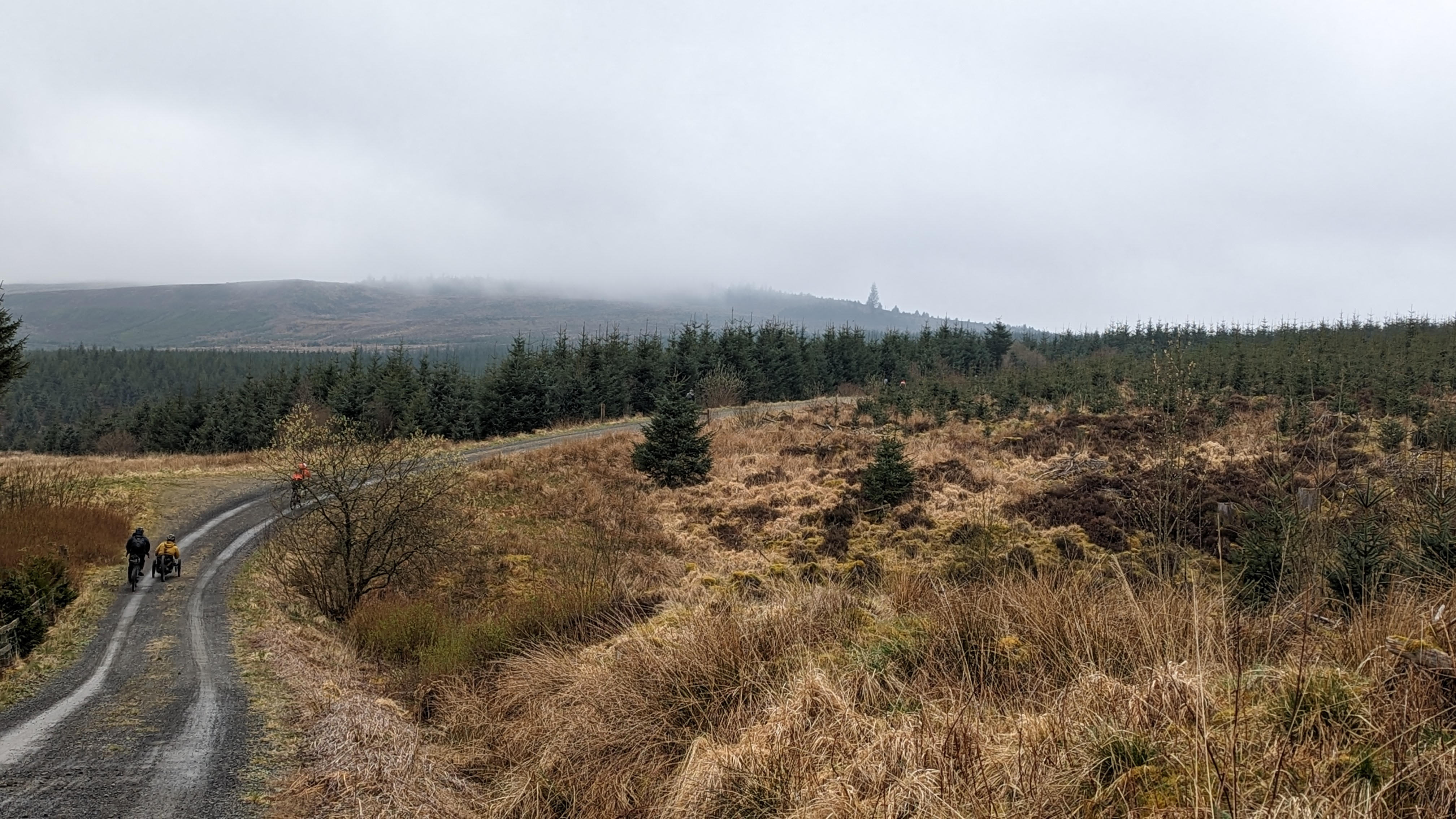
Full commitment
The Reiver is one of the biggest gravel events in the UK, and takes place in an area that could be kindly described as ‘a bit out of the way’. Basic infrastructure like tarmac roads is thin on the ground, and even a mobile signal is non-existent for the most part. If anything goes wrong on the route, the participants on this particular trip won’t be walking out of the forest. With that in mind, we’re signed up for the relatively achievable shorter 65km version, and staff from Experience Community have travelled up beforehand to assess the route and check for any features that might necessitate a diversion or a U-turn. The river crossing, I’m not disappointed to learn, will not be on the menu, but it’ll still be a proper Dirty Reiver experience.
On arrival we’re met by the beaming area forestry manager Al MacLennan, who’s played a large part in the decision to come and ride the event. “As far as I’m concerned, you guys are VIPs!” he exclaims before we start discussing the niceties of where to park vans or the location of accessible toilets. Handcycling is a good match with gravel riding, and Al is keen to see Kielder expand its offer. In much of England, gates and stiles rule out many potentially accessible routes, but, just as with mountain bike trail centres, the wide open spaces in forestry have a lot more leeway to accommodate adaptive riding. Elsewhere, Scotland is blazing the trail, thanks to organisations like the Adaptive Riders Collective and events like the Dukes Weekender, which was the first gravel event in the UK to add an adaptive cycles category in 2022.
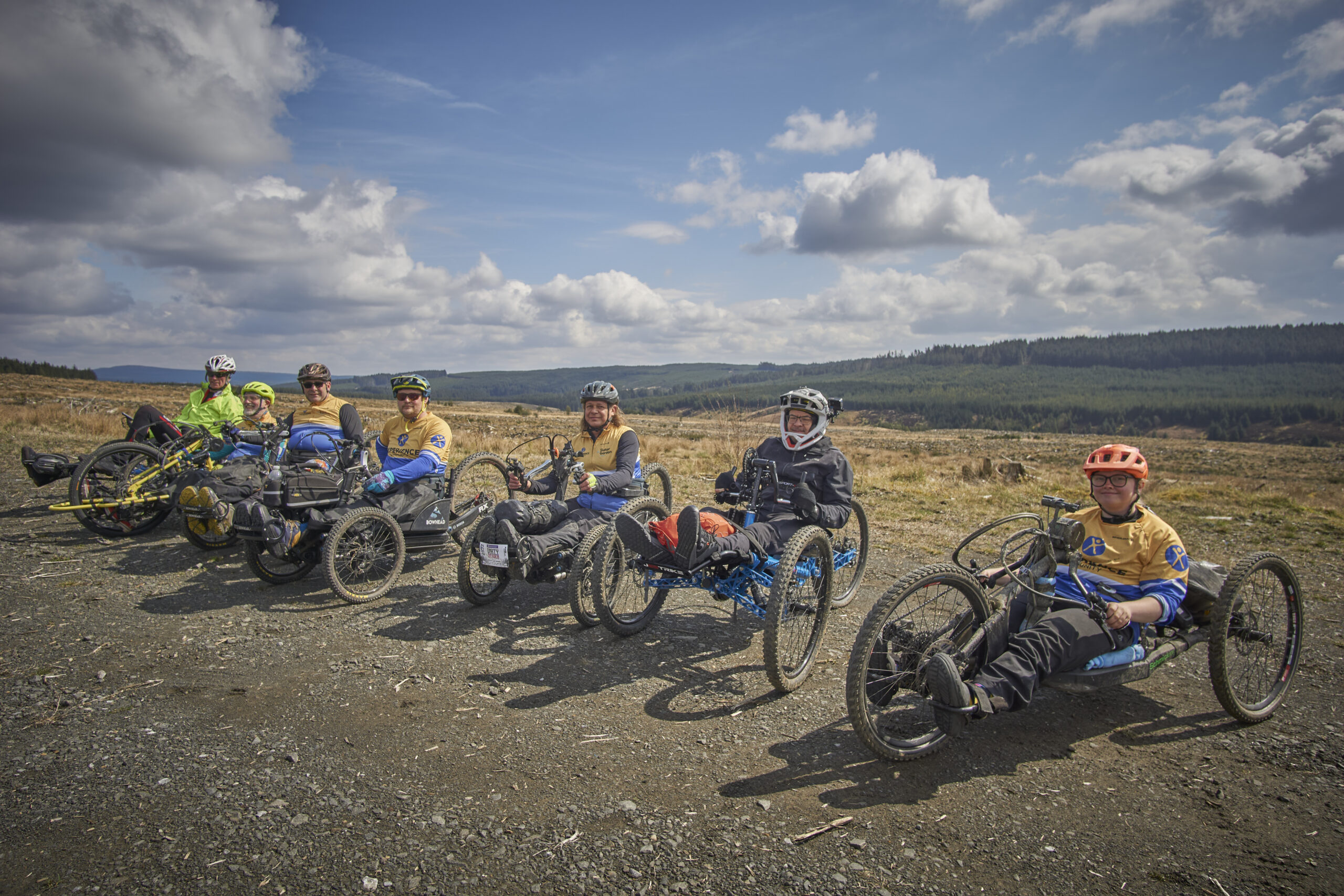
The crew of disabled riders that assembles to take on the adaptive Reiver is a mixed bunch. There’s Robin and Jaime, both mountain bikers through and through. Steve is ex-Forces and as down-to-earth as they come. Mike, originally from Wales but now based in Edinburgh, is a dyed-in-the-wool roadie, gently ridiculing the idea of using any sort of e-assist. Experience Community staff member Lucy and head honcho Craig are both relatively new to bikes, although Lucy is part of the GB paraclimbing team and spends as much time as possible on a wall. There’s also a team of support riders who are a mix of Experience Community Staff (Rik and Antonio) and volunteers (Graham, Ione and me).
Given that most of the riders have one particular thing in common, at dinner that night there’s a lot of spinal injury chat. There’s a huge amount of variation from person to person within the group – some have lots of upper body mobility, some people have limited hand function. I even overhear a frame material debate – aluminium versus titanium – but for wheelchairs instead of bikes. Just like with non-adaptive bikes, personal preference plays a big role. Mike favours human-powered handcycles and relishes a long road ride, while Robin is very much in love with his 3000W Bowhead Reach. There are plenty of anecdotes about everyday life as a wheelchair user too – one guest relates how an eager shop assistant tried to sell him a pair of boots, exclaiming: “You’ll never wear these out!”
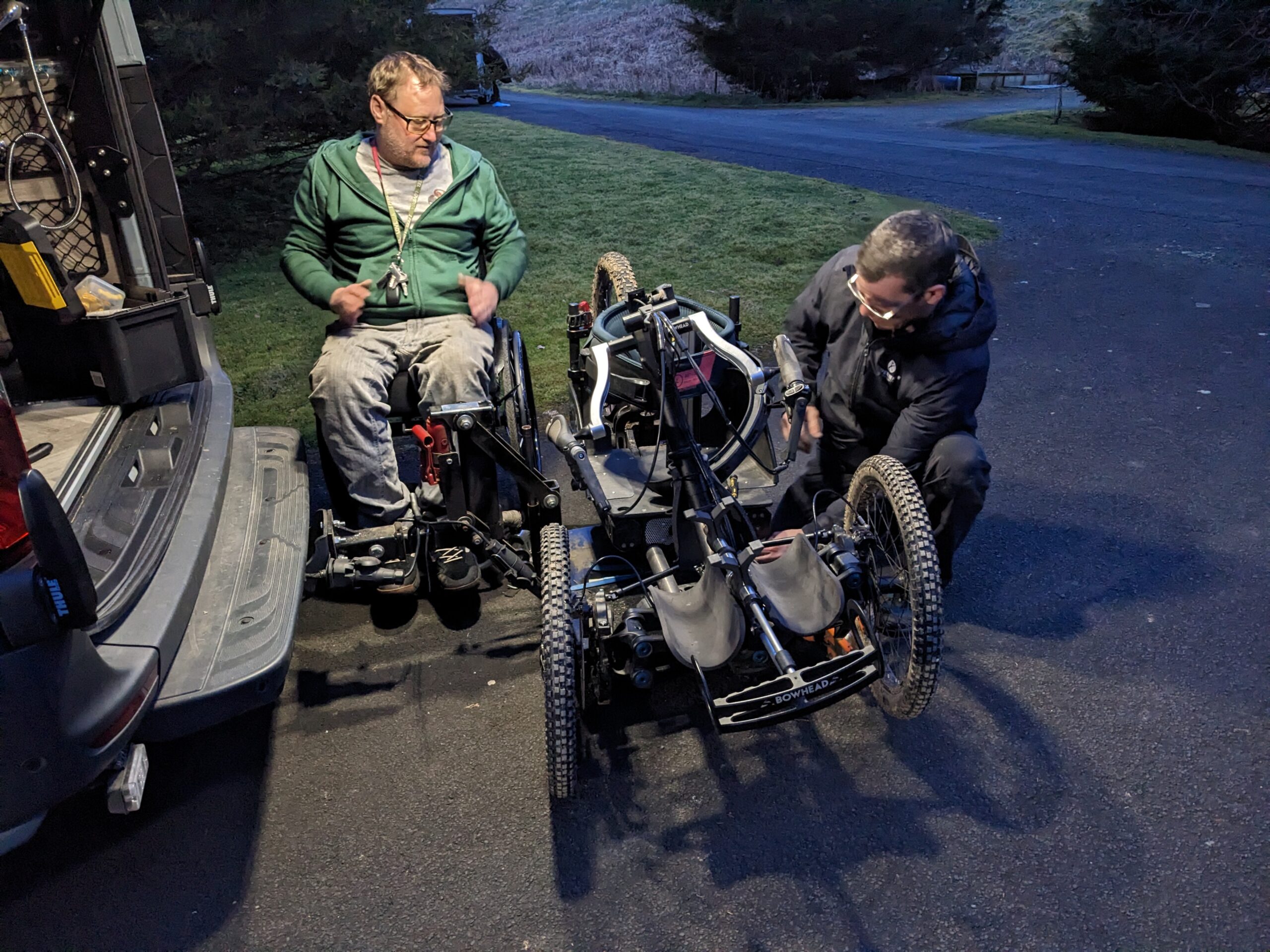
Pressure faffing
Next morning it’s an early start. At the meetup point huge trikes are extracted from vans, along with a flock of wheelchairs to allow everyone to transfer to their bikes. Rik packs up a massive pile of inner tubes and tyre pressures are double-checked. A puncture on a handcycle is a major issue, given that the rider might not be able to get out, and most of the bikes don’t have tubeless compatible tyres – plus who wants to be strapped into a handcycle while a tubeless leak sprays sealant over you? Limbs are secured, as running over your foot is a very real risk in a handcycle, and it’s not unknown for paraplegic riders to sustain lower limb injuries without realising as they can’t feel them. Support belts and backrests are adjusted and adjusted again. Riders dress warmly, with full-length waterproof trousers. “Your legs are just giant radiators that cool your core down.” comments one. Thankfully the forecast for heavy rain seems to be a bit off, although there’s still plenty of mud and drizzle in evidence.
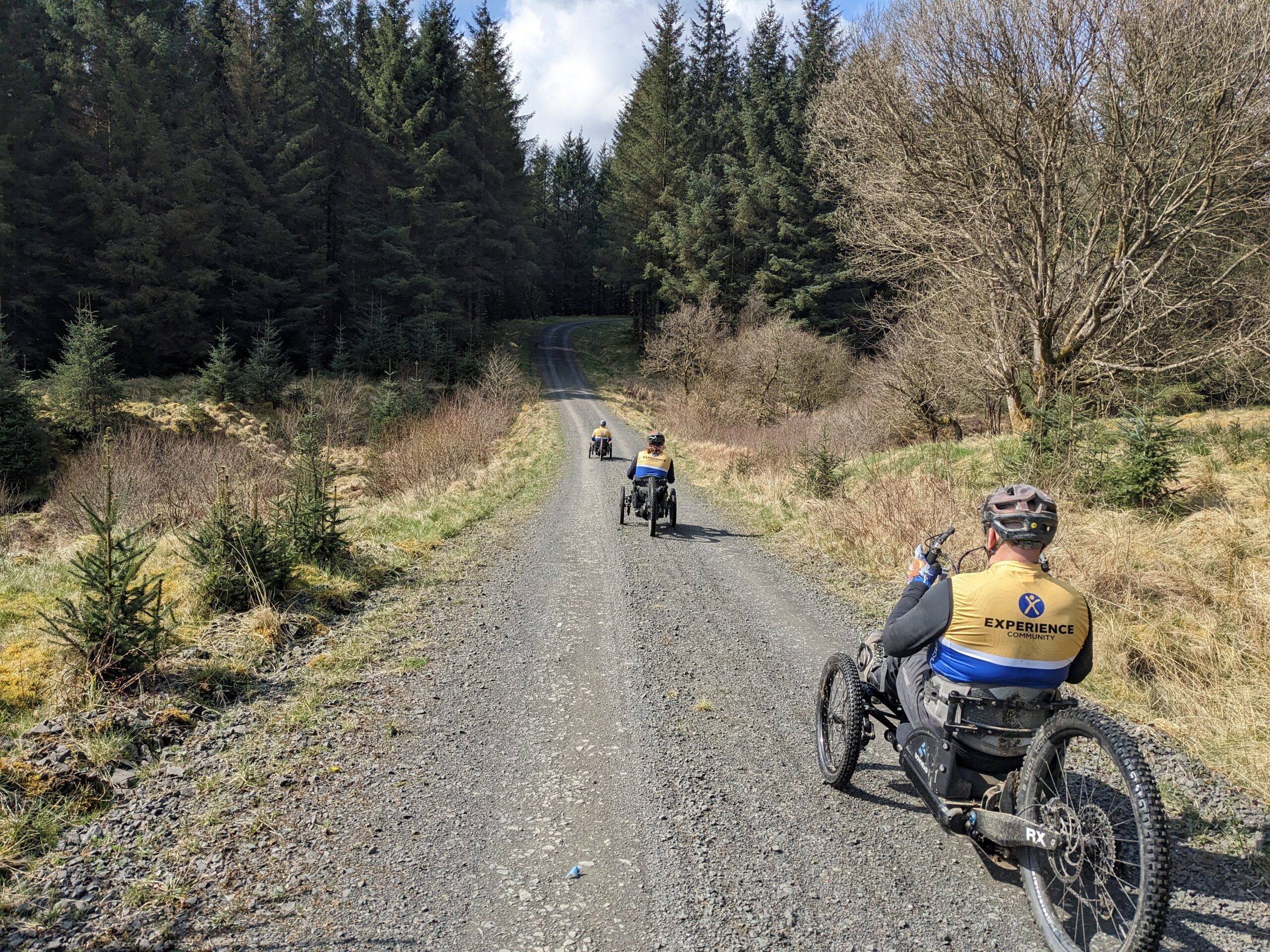
Start time comes and we have a group roll-out, which quickly turns into several smaller groups. Each disabled rider has a support rider, and Rik and Craig bring up the rear to deal with any issues. E-assist on the handcycles is a good leveller – they tend to be slightly slower than a standard bike uphill, but able to descend with a big dose of speed thanks to their low centre of gravity and wind resistance. Mud, ruts and rough terrain aren’t quite as easily dealt with: the cycles with no suspension are quite vulnerable to tipping over, but the newer Bowhead trikes have an articulating front wishbone that helps keep the rider upright, plus loads of climbing traction from their wide rear tyres.
Around 20 miles in, we get to the course split and I find myself riding with Lucy and Ione, another support rider. Lucy is using Craig’s old handcycle and the battery is draining much faster than she expected. There are spare batteries at our accommodation, an outdoor centre for disabled people just before the feed station, but a big old hill sits right in the way. Ione heads off to see if she can retrieve a spare and Lucy starts nursing the bike uphill, then her battery gives out completely to the accompaniment of some very loud expletives.
Second battery, second loop
Tackling the stiffest climb on the course in manual mode is extremely hard work, and for the next few miles I boost her up the hills while pushing my bike. It’s definitely more grovel than gravel, although we trade places with a few other people in similarly desperate circumstances, not to mention one poor rider who’s lost her car keys and has to retrace several miles to find them. Just before some very muddy woods, Ione intercepts us with a backpack containing a fresh battery, and it’s swapped to sighs of relief all around. Lucy’s trike continues to give her a spot of grief as the front wheel breaks traction in the slippery stuff, but the wettest section is soon over and we’re on the downhill to our cabins.
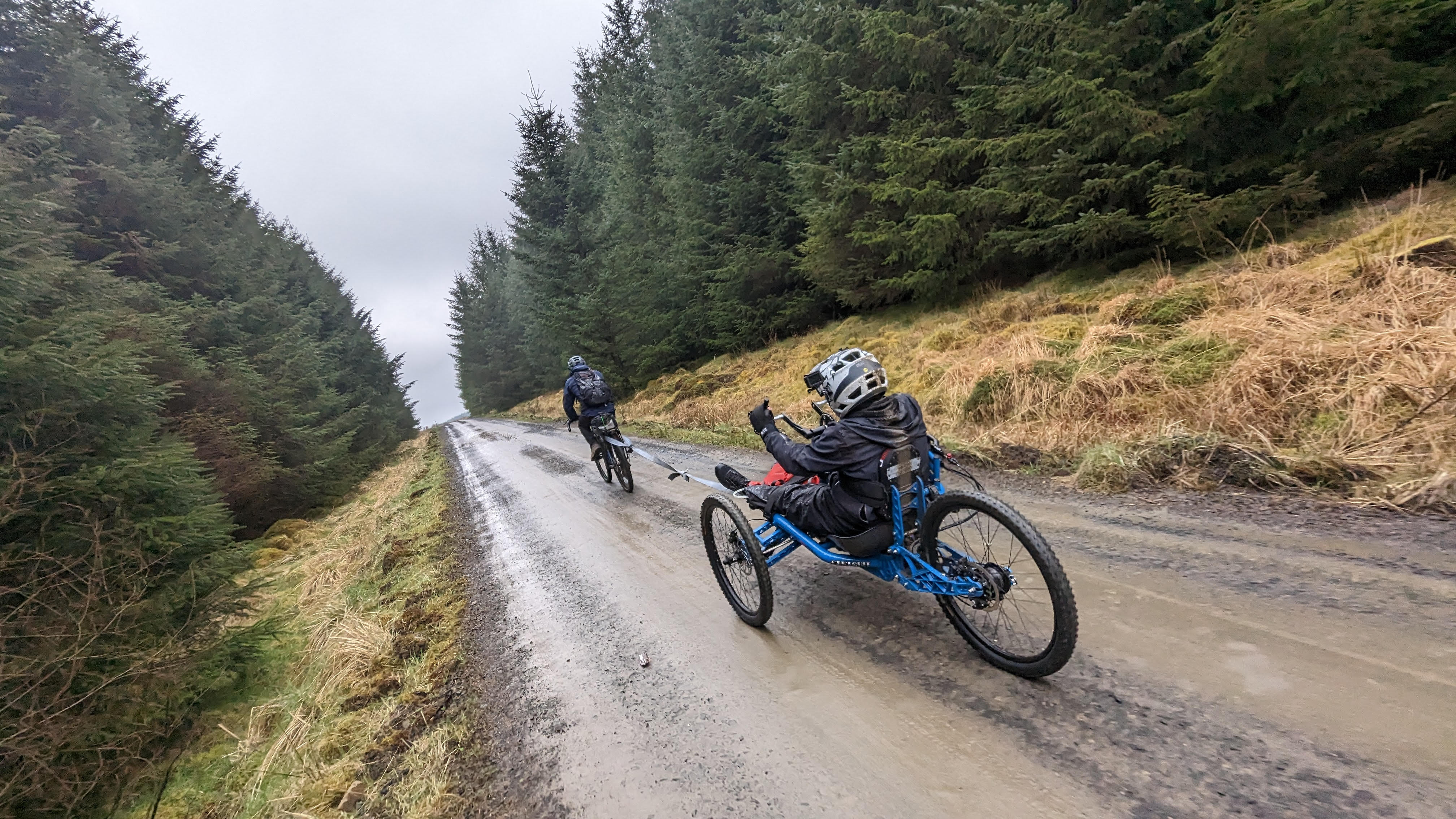
After a sandwich stop and a loo break at our accommodation, we head onwards and dispatch the last loop of the route with much less drama. There’s still the odd awkward moment, like the feed station. Even though we’ve already eaten and don’t need to stop, it’s a struggle for Lucy to get through thanks to gaggles of snacking riders thronging the trail. I also get a bit of a taste of the slightly worrying compulsion to help, whether wanted or not, which overwhelms some people when they see a disabled person, but most riders are considerate and happy to listen.
The hairpin bends before the Lewisburn bridge necessitate a three-point turn – there’s a wide turning circle on most handcycles, and no reverse gear, except for physically turning the wheels with your hands. Still, there’s nothing on the route that requires a diversion and we get to bomb some downhills – Lucy comfortably keeping pace with the non-disabled riders. She mentions that she’s spent a fair bit of time sit skiing recently and there seem to be some transferable skills when it comes to cornering on loose gravel. Pretty soon the route turns back towards the lake, and before we know it we’re back at the finish, scoffing slightly questionable chilli. Nearly all of the riders have made it around – another battery disaster scuppers one’s attempt, but he’s the only DNF. “I want to do the 200 next year”, announces Lucy suddenly, “I’ll just need to carry four batteries. Maybe five…”

The following day we all head out on a social ride around the forest. With a more relaxed schedule than the previous day, not to mention the sun on full beam setting, it’s just as much fun as any regular Sunday ride. We pose for plenty of group photos and there’s even an impromptu handcycle drag race along the lake shore. For the riders, I get the feeling that the weekend has been less about the event (although ticking off the UK’s biggest gravel race is nothing to be sniffed at) and more about the opportunity to meet up, ride bikes and hang out with friends. For the support riders, myself included, it feels hugely rewarding to be a part of making this happen. Venues and events that can accommodate properly adventurous adaptive cycling are still woefully rare, but such is the drive and enthusiasm of the adaptive riders, the support team, the event organisers and the land managers, it feels like things can only improve.
Handcycle Lowdown
Getting an adaptive bike for proper off-road use is a tricky business in the UK, with few suppliers and limited opportunities to try one out. Experience Community offers test rides on its fleet at Leeds Urban Bike Park and also supplies several different brands of adaptive trikes, including the ones below. The ideal bike depends on a few different factors, including the level of the rider’s injury and the intended use. There are long build and delivery queues for some models, and none of them are cheap, but can you put a price on being able to get back on the trails?
Robin – Bowhead RX

The handcycle you’ve probably seen on Martyn Ashton’s videos, the Bowhead RX is the pedal-assist version of the company’s popular Reach e-MX trike and, therefore, legally classed as an e-bike in the UK. The front wheels tilt by around 30°, meaning that the rider stays upright on off-camber tracks and can lean into tight corners, but it’s still narrow and nimble by trike standards. Dual Bosch PowerTube batteries give the RX an excellent range and there’s a Bosch Performance Line CX motor tucked under the seat. With just under 80mm of front suspension travel and 120mm at the rear, it’s the handcycle equivalent of a trail bike.
Jaime – Jeetrike
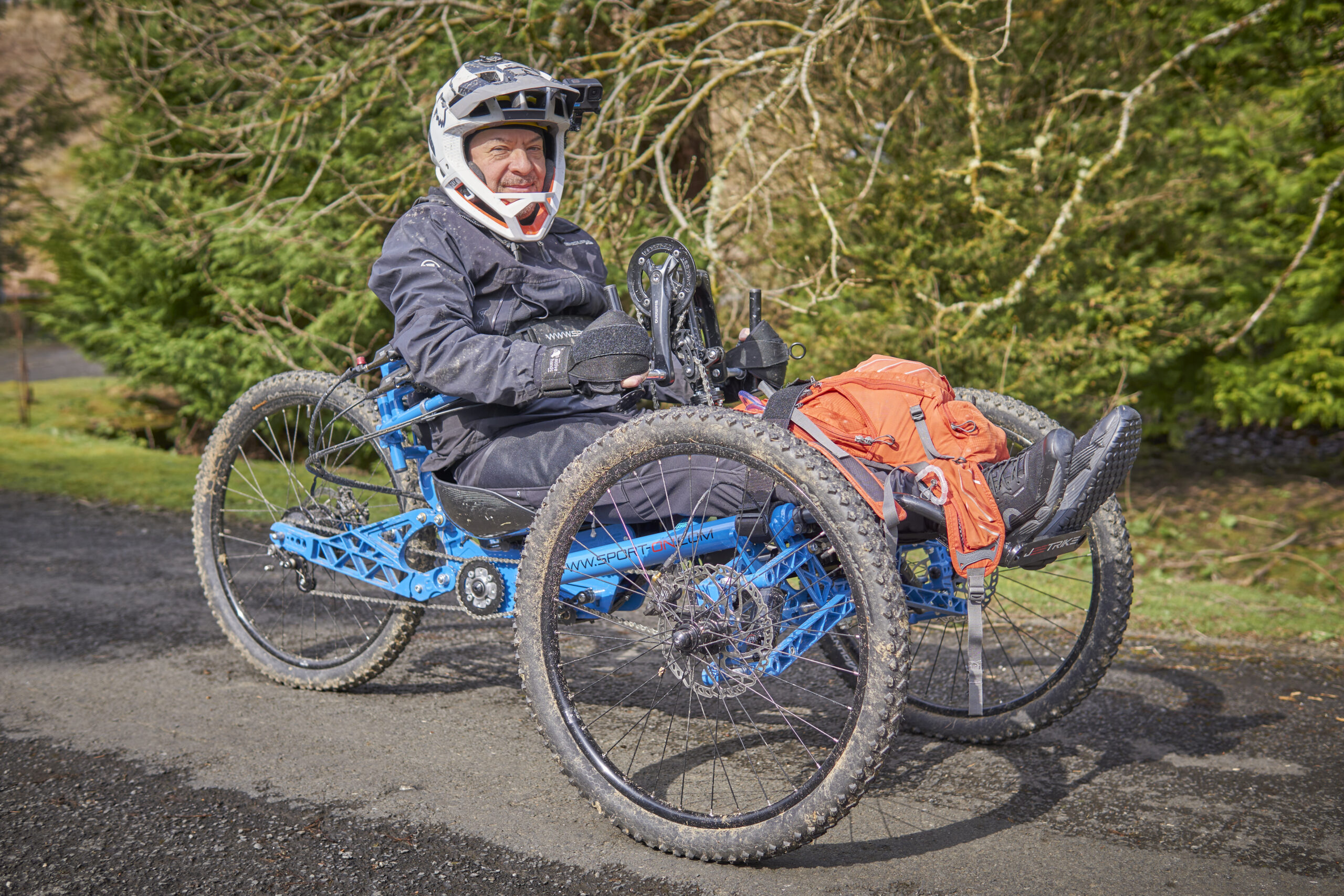
Polish manufacturer Sport-On’s Jeetrike is a full suspension design with a wide platform for stability. Unlike the Bowhead RX, the front wheels don’t tilt, making it more suitable for people with less core movement. It’s even available in a fat bike version. Jaime’s hand function is limited, so his trike has modified controls that he can operate with his elbow. Gear changes are still tricky and he’s looking for a better solution than the stock design, which uses a modified Rohloff twist shifter.
Lucy – Schmicking
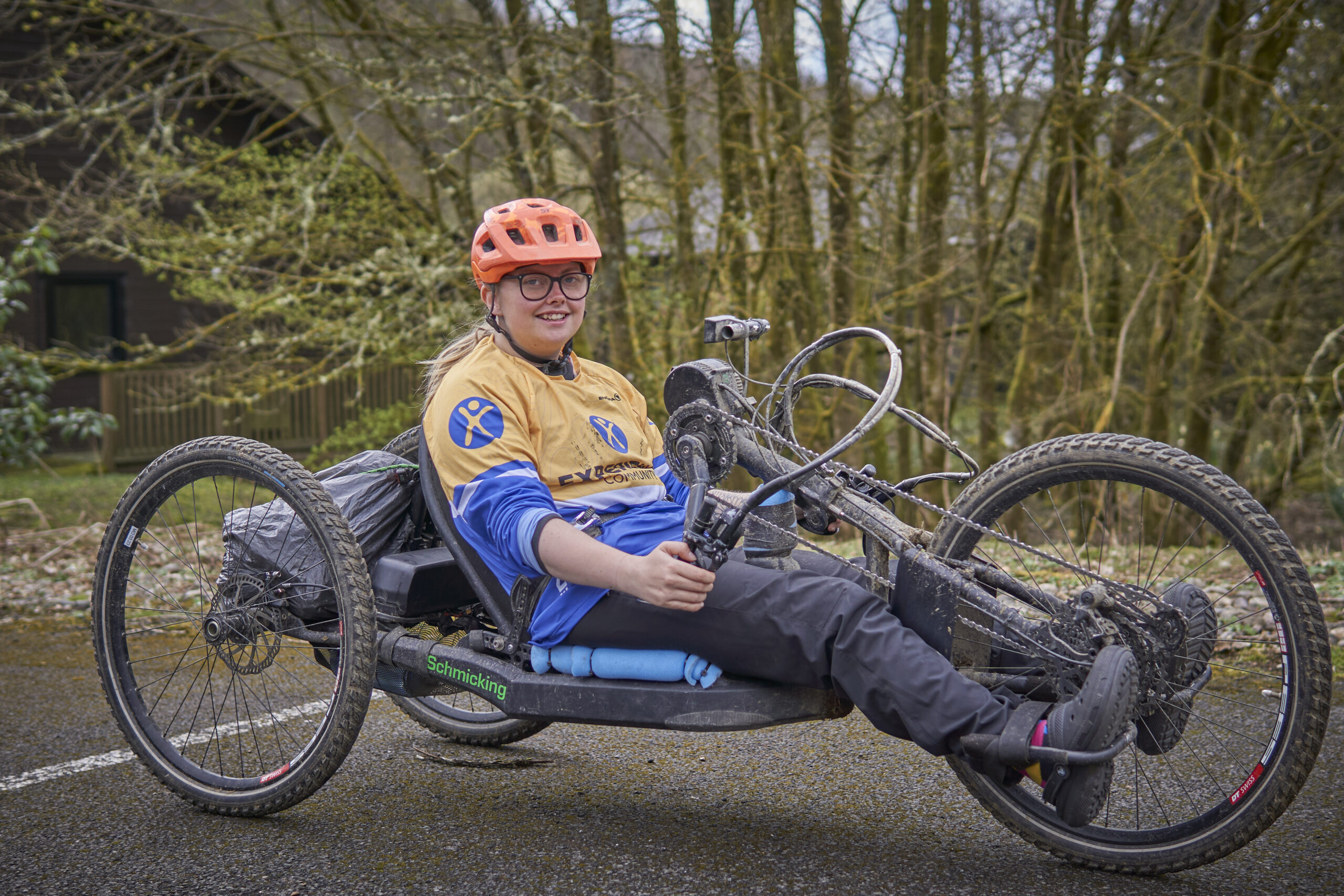
A German brand that also manufactures wheelchairs and racing handcycles, Lucy’s Schmicking is the handcycle equivalent of a gravel bike. It has no suspension, but with an e-assist option (or conversion, in Lucy’s case) it’s more than able to take on the hilly fire roads at Kielder. Front-wheel drive and a wider turning circle mean it’s less capable off-road than newer designs of handcycle, but it’s also a lot cheaper – around £6,000 compared to £18,000 for a basic Bowhead RX. It’s also a lighter, more compact design, that can be transported in an estate car, while the larger bikes with suspension generally need a van or trailer.




